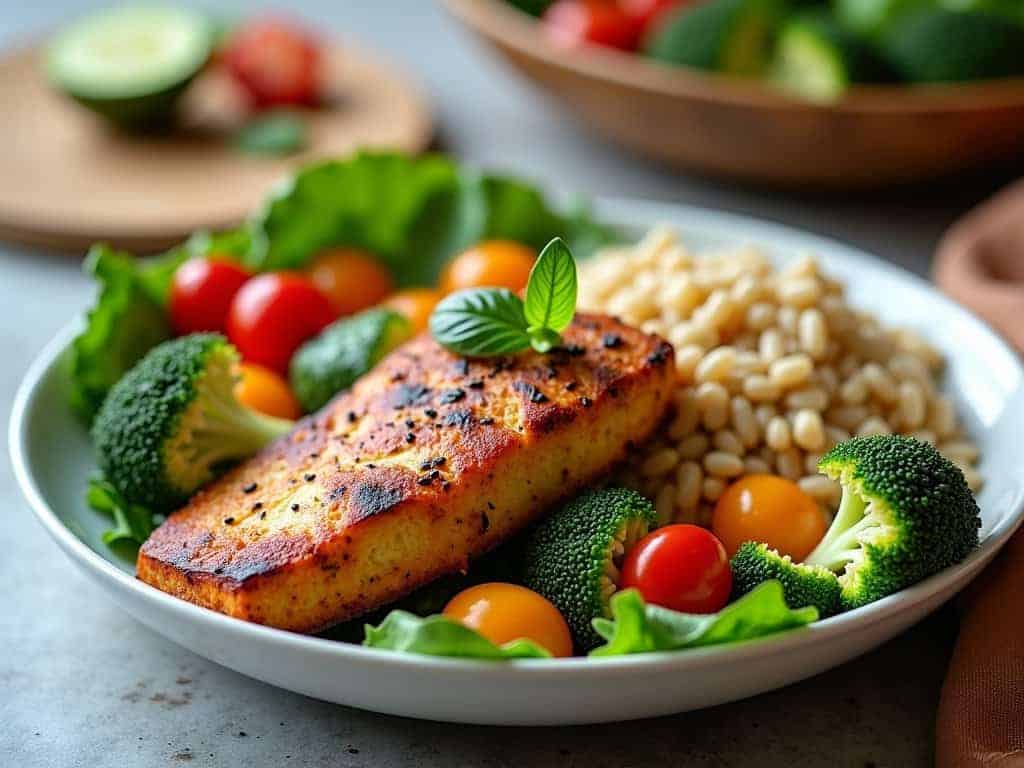Steaming tamales is a traditional Mexican cooking method that results in flavorful, moist, and tender tamales that are sure to impress your family and friends. In this comprehensive guide, we will walk you through the step-by-step process of making the best tamales right in your own kitchen. From preparing the masa to filling and wrapping the tamales, to steaming and cooking them to perfection, we’ve got you covered with all the tips and tricks you need to succeed.
Key Takeaways:
- Preparation is Key: Before starting the steaming process, ensure your tamales are well-prepared with the right filling, masa, and corn husks. This will help in achieving the best texture and flavor.
- Proper Steaming Technique: To cook the best tamales, use a steaming setup with a proper steamer basket or rack. Ensure the tamales are placed upright in the steamer to allow even cooking and perfect texture.
- Patience is a Virtue: Steaming tamales is a process that requires patience. Allow enough time for the tamales to steam thoroughly, letting the flavors meld together and ensuring they reach the desired consistency.
Essential Ingredients and Tools

Key Ingredients for Traditional Tamales
Traditional tamales are made with a few key ingredients that give them their authentic flavor and texture. The imperative ingredients include masa harina (a type of corn dough), pork lard or vegetable shortening, chicken or pork broth, chilies or chili powder, and a filling of meat (such as pork or chicken), vegetables (like peppers and onions), and spices (such as cumin and oregano). These ingredients come together to create a rich and flavorful masa that is then filled and steamed to perfection.
Necessary Tools and Equipment for Tamale Making
One of the most important tools you will need for making tamales is a large steamer pot to cook the tamales. You’ll also need corn husks for wrapping the tamales, a mixing bowl for preparing the masa, and a spatula for spreading the masa onto the corn husks. Additionally, having a sharp knife for cutting ingredients, a large pot for cooking the filling, and a food processor for blending the masa ingredients can make the tamale-making process smoother and more efficient.
The steamer pot is a crucial tool that ensures the tamales are cooked evenly and thoroughly. It’s important to handle the steamer pot with caution as it can get very hot and produce steam that can cause burns. Corn husks are imperative for wrapping the tamales and imparting a subtle corn flavor during the steaming process. Mixing bowls and spatulas help in preparing and spreading the masa evenly, while a sharp knife is necessary for cutting ingredients precisely. With these imperative tools and equipment, you’ll be well-equipped to make the best tamales at home.
Preparing the Tamale Masa
Little can compare to the deliciousness of a well-made tamale. One of the key elements of a great tamale is the masa, the corn dough that encases the filling. Getting the masa just right is crucial for a successful tamale-making experience.

How-to: Mixing the Perfect Masa
With the masa being the heart of the tamale, it’s important to pay attention to how you prepare it. Start by mixing masa harina, vegetable broth, lard, and spices in a large bowl. The consistency should be similar to that of a thick cake batter to ensure the tamales hold together well during steaming.
Tips for Achieving the Ideal Masa Consistency
To guarantee your masa turns out just right, there are a few key tips to keep in mind. Remember to mix the masa well to avoid clumps and ensure an even texture. Gradually add the broth to the masa mixture until you reach the desired consistency. Test the masa by floating a small amount in a cup of water – if it floats, it’s ready. Lastly, let the masa rest for at least 30 minutes before assembling the tamales to allow it to hydrate fully.
- Mix the masa well
- Gradually add the broth
- Test the masa
- Let the masa rest
Assume that a well-prepared masa will result in tamales that are tender and flavorful, with just the right amount of moisture to hold everything together. The masa consistency is crucial to the success of your tamales, so take the time to get it perfect.
- Tender tamales
- Flavorful results
For instance, keeping the masa too dry can lead to tamales that are crumbly and fall apart easily, while a masa that’s too wet can result in tamales that are soggy and unpleasant to eat. Finding the ideal balance is key to creating the perfect tamale every time.
Filling and Flavoring

Choosing the Right Fillings for Your Tamales
Little compares to the joy of biting into a well-made tamale bursting with flavorful fillings. In terms of selecting filling ingredients for your tamales, the possibilities are endless. From traditional options like shredded chicken, pork, beef, or cheese to vegetarian alternatives like beans, vegetables, and even sweet fillings like pineapple or raisins – the choice is yours. It is important to ensure that your fillings are cooked and seasoned well before using them in your tamales to enhance the overall taste.
How to Infuse Flavors into Your Tamales
With the masa as the canvas, infusing flavors into your tamales can take them from ordinary to extraordinary. Whether you opt for a savory filling or a sweet one, there are various ways to elevate the taste of your tamales. For instance, consider marinating your proteins in flavorful sauces or spices overnight to ensure they are packed with taste. Additionally, incorporating ingredients like fresh herbs, spices, chilies, or even citrus zest into your masa can add depth and complexity to your tamales.
For instance, using homemade stocks, such as chicken or vegetable stock, to cook your proteins can infuse them with rich flavors that will be carried through to the final product. Experimenting with different combinations of seasonings and ingredients can help you create tamales that stand out in flavor and leave your taste buds satisfied.
Assembling the Tamales
All great tamales start with the assembly process, where the flavors and textures of the filling combine with the masa to create a delightful treat. It is important to pay attention to details and follow traditional techniques to ensure the best results.

The Art of Spreading Masa on Corn Husks
One of the critical steps in assembling tamales is spreading the masa onto the corn husks. The masa should be spread evenly, leaving a border around the edges to allow for folding. A thin, even layer of masa ensures that the tamale cooks properly and maintains a perfect balance of flavors.
Techniques for Filling and Folding Tamales
For the filling process, there are various techniques you can use to ensure that your tamales are well-filled and perfectly folded. Whether you prefer a generous amount of filling or a more subtle touch, it is crucial to distribute the filling evenly to avoid overfilling or underfilling the tamales.
Tamales require a delicate balance of filling and masa to achieve the perfect taste and texture. Overfilling can cause the tamales to burst during cooking, while underfilling can result in bland tamales. Mastering the art of filling and folding takes practice, so don’t be discouraged if your first few attempts are not perfect.
Steaming Techniques
Despite the variety of cooking methods available, steaming remains the traditional and preferred technique for making delicious tamales. Steaming ensures that the masa dough cooks thoroughly and absorbs the flavors of the filling, resulting in tender and flavorful tamales. There are imperative techniques and factors to consider when steaming tamales to achieve the perfect texture and taste.

How-to: Setting Up Your Tamale Steamer
Howto prepare your tamale steamer properly is crucial for successful results. Start by adding water to the bottom of the steamer without letting it touch the tamales during cooking. Line the steamer basket with corn husks or a layer of soaked dried corn husks to prevent the tamales from sticking. Arrange the tamales upright with the open ends facing up to prevent the filling from spilling out during cooking. Cover the tamales with a layer of more corn husks before placing the lid on the steamer to trap the steam effectively.
Factors Affecting Steaming Time and Temperature
Factors that affect steaming time and temperature play a significant role in achieving perfectly cooked tamales. Your steaming duration and heat level will depend on various factors such as the size of the tamales, the thickness of the masa dough, and the altitude of your location. Any deviation from the recommended time and temperature may result in tamales that are undercooked or overcooked, affecting their texture and taste.
- Tamales Size: Larger tamales will require a longer steaming time compared to smaller ones.
- Masa Thickness: Thicker masa dough will need more time to cook properly.
- Altitude: High altitudes may require longer cooking times due to lower boiling points of water.
Factors Affecting Steaming Time and Temperature
| Tamales Size | Large tamales need more time to cook |
| Masa Thickness | Thicker masa requires longer steaming |
| Altitude | Higher altitudes need longer cooking times |
Alternative Cooking Methods
Now let’s explore some alternative cooking methods for making tamales at home. While steaming is the traditional way of cooking tamales, there are other methods that can also yield delicious results. Two popular alternatives are baking tamales and using a pressure cooker.

Baking Tamales: Pros and Cons
Methods for baking tamales have gained popularity for their convenience and ability to produce a slightly different texture compared to traditional steaming. Here is a breakdown of the pros and cons of baking tamales:
| Pros | Cons |
| Convenient | Can dry out tamales |
| Crispy exterior | May result in uneven cooking |
| Hands-off cooking process | Less traditional flavor |
Using a Pressure Cooker for Quicker Tamales
Using a pressure cooker for making tamales is a game-changer for those looking to cut down cooking time while still achieving tasty results. Pressure cookers can significantly reduce the cooking time required for tamales, making them a great option for busy home cooks.
Pressure cookers work by trapping steam and increasing the pressure within the cooker, allowing food to cook faster than traditional methods. It is important to follow the manufacturer’s instructions carefully when using a pressure cooker, as misuse can lead to dangerous situations. However, the positive aspect of using a pressure cooker is the quicker cooking time it offers, perfect for those who are short on time but still want to enjoy homemade tamales.
Serving and Storing Tamales
How to Serve Tamales Like a Pro
Unlike many dishes that are simply plated and served, tamales come with a unique presentation method. To serve tamales like a pro, it’s necessary to unwrap them carefully and place them on a plate or platter. Ensure that the corn husk or banana leaf is neatly folded back to reveal the steamed masa and flavorful filling inside. You can add a dollop of salsa, a sprinkle of fresh cilantro, or a drizzle of crema on top for an extra pop of flavor and color.
Tips for Storing and Reheating Leftover Tamales
Even though tamales are best enjoyed fresh, you may find yourself with leftovers. To store leftover tamales properly, refrigerate them in an airtight container. When reheating, it’s best to steam the tamales to maintain their moisture and texture. You can also reheat them in the microwave, but be sure to cover them with a damp paper towel to prevent them from drying out.
- Store leftover tamales in an airtight container in the refrigerator.
- Reheat tamales by steaming them to retain their moisture and flavor.
- When microwaving tamales, cover them with a damp paper towel to prevent them from drying out.
Some people even argue that reheated tamales can be just as delicious as freshly steamed ones if done correctly. Whether you enjoy your tamales immediately or save some for later, following these tips will help you savor every bite. Be mindful of, proper storage and reheating techniques can make a significant difference in preserving the authentic flavors of this traditional dish.
- Always store leftover tamales in the refrigerator to maintain freshness.
- Reheat tamales with care to ensure they remain moist and flavorful.
- Thou shall not let any leftover tamales go to waste!
Troubleshooting Common Tamale Problems

Addressing Issues with Masa Texture
To achieve the perfect masa texture for your tamales, pay close attention to the consistency of the dough. If your masa is too dry, add a small amount of warm broth or water, a spoonful at a time, until it reaches the desired texture. On the other hand, if your masa is too wet, gradually incorporate more masa harina to thicken it up. Remember that the masa should be smooth and spreadable, but not runny or crumbly. Consistency is key when it comes to getting the right texture for your tamales.
How to Fix Undercooked or Overcooked Tamales
Little room for error exists when it comes to tamale cooking time. If your tamales are undercooked, place them back in the steamer for an additional 15-20 minutes until the masa is fully cooked and pulls away easily from the corn husk. Conversely, if your tamales are overcooked and the masa is mushy, you can try salvaging them by removing them from the husk and crisping them up in a hot skillet. This method can help to restore some texture to the dough, making them more enjoyable to eat. Proper cooking time is crucial for achieving the ideal tamale consistency.
Understanding the balance of moisture and heat in tamale cooking can help you overcome common problems and ensure a delicious end result. Keep a close eye on your tamales while they steam, checking periodically to prevent them from becoming undercooked or overcooked. By following these troubleshooting tips and techniques, you can master the art of tamale making and impress your friends and family with your culinary skills.
Expanding Your Tamale Repertoire
Keep your tamale game strong by expanding your repertoire beyond the traditional pork and chicken tamales. Exploring different regional variations and trying out vegan and vegetarian options can add diversity and excitement to your tamale-making adventures.
Exploring Regional Tamale Variations
To elevate your tamale experience, consider exploring the wide array of regional tamale variations. From the sweet tamales of Oaxaca to the spicy tamales of Yucatan, each region in Mexico offers a unique twist on this beloved dish. Branch out from the classic fillings and experiment with ingredients like mole, pumpkin flowers, or even pineapple. Embrace the creativity and flavors of different regions to take your tamale game to the next level.
Vegan and Vegetarian Tamale Options
Repertoire: If you’re looking to cater to vegan or vegetarian diets, don’t fret! There are plenty of delicious options for plant-based tamales. Substitute traditional lard with vegetable oil or vegan butter in the masa, and fill your tamales with a variety of vegetables, beans, or even vegan cheeses. The possibilities are endless when it comes to creating flavorful and satisfying vegan and vegetarian tamales.
The key to successful vegan and vegetarian tamales lies in experimenting with different ingredients and seasonings to create bold and delicious flavors. Don’t be afraid to get creative and customize your fillings to suit your tastes. Whether you’re a seasoned tamale enthusiast or a newbie to the world of tamales, trying out plant-based options can open up a whole new world of culinary possibilities.
Conclusion
Conclusively, making the best tamales at home is a rewarding experience that requires time, patience, and attention to detail. By following this comprehensive guide to steaming and cooking tamales, you can ensure that your homemade tamales turn out perfectly every time. From preparing the masa and filling to steaming the tamales to perfection, every step is crucial in creating a delicious batch of tamales that your friends and family will love. By mastering the art of tamale-making, you can enjoy this traditional Mexican dish in the comfort of your own home whenever you crave it.
Bear in mind, practice makes perfect when it comes to making tamales. Don’t be discouraged if your first batch isn’t perfect – with time and experience, you’ll become more adept at crafting delicious tamales that rival those made by the best tamale-makers. So gather your ingredients, set aside some time, and enjoy the process of creating a homemade culinary masterpiece that will delight your taste buds and bring the flavors of Mexico into your kitchen.
FAQ
Q: What ingredients do I need to make the best tamales at home?
A: To make the best tamales at home, you will need corn husks, masa harina, lard or vegetable shortening, broth or water, and your choice of filling such as meats, cheese, or vegetables.
Q: How do I prepare the corn husks for making tamales?
A: To prepare the corn husks for making tamales, soak them in hot water for at least 30 minutes until they are soft and pliable. Make sure to rinse them thoroughly to remove any debris or silk.
Q: What is the best way to spread the masa on the corn husks?
A: The best way to spread the masa on the corn husks is to use a spoon or spatula to spread a thin, even layer across the center of the husk, leaving a border around the edges to allow for folding.
Q: How do I assemble the tamales before steaming them?
A: To assemble tamales, place a spoonful of your desired filling in the center of the masa-covered husk. Fold one side of the husk over the filling, then fold the other side to create a tight cylinder. Fold the bottom of the husk up to enclose the tamale.
Q: How long do I steam tamales, and at what temperature?
A: Steam tamales for about 1.5 to 2 hours over medium heat, making sure the water is constantly simmering. Check the tamales periodically and add more water if needed. Tamales are done when the masa is fully cooked and easily pulls away from the husk.






